Aging In Place
The Decision to Age in Place
There are many potential benefits of aging in place. Staying in one’s home can be less expensive than moving to an assisted-living community. Upfront moving costs can be pricey, and the entrance fees and monthly payments for room and board in independent- and assisted-living facilities can be cost prohibitive. More important benefits can be the psychological advantages of staying close to one’s friends, medical professionals and faith community, all vital components of healthy aging. There are many considerations, from physical to financial, involved in a decision to remain at home.


Physical
According to SeniorLiving.org, aging takes a toll regardless of if one takes care of their body, eats properly, exercises and engages in healthful emotional practices such as mental engagement, mindfulness and gratitude. These changes include poorer eyesight, reduced muscle mass and strength, diminished physical and mental endurance, higher bone fragility and loss of balance, reduced hearing capacity and decreased mobility and agility. These changes can affect activities of daily living (ADL) such as taking care of one’s health–preparing meals and taking medication properly, taking public transportation or driving without mishaps and maintaining one’s home and outdoors.
Financial
According to Financial Advisor Magazine, one of the most critical decisions retirees will make is whether to stay in their homes or move to a retirement community. While most would choose to “age in place” rather than move, finances will play an important role in the decision, which must be made with a realistic and non-sentimental mindset. Many elderly people will eventually require caretaking services, and these can be very expensive. Retirees who remain in their homes have several options for financing this care. Long-term care insurance is one option; however, few people purchase these policies due to cost and the potential to lose all premiums in the event that services are not required. Reverse mortgages are another option that should be approached cautiously to avoid possible loss of the home if the stipulations of the agreement are not met. Medicaid can also provide for caretaking services in the home, but only for those who have exhausted most of their net worth. It is highly advisable for retirees to seek advice from a financial professional to make the best decision.
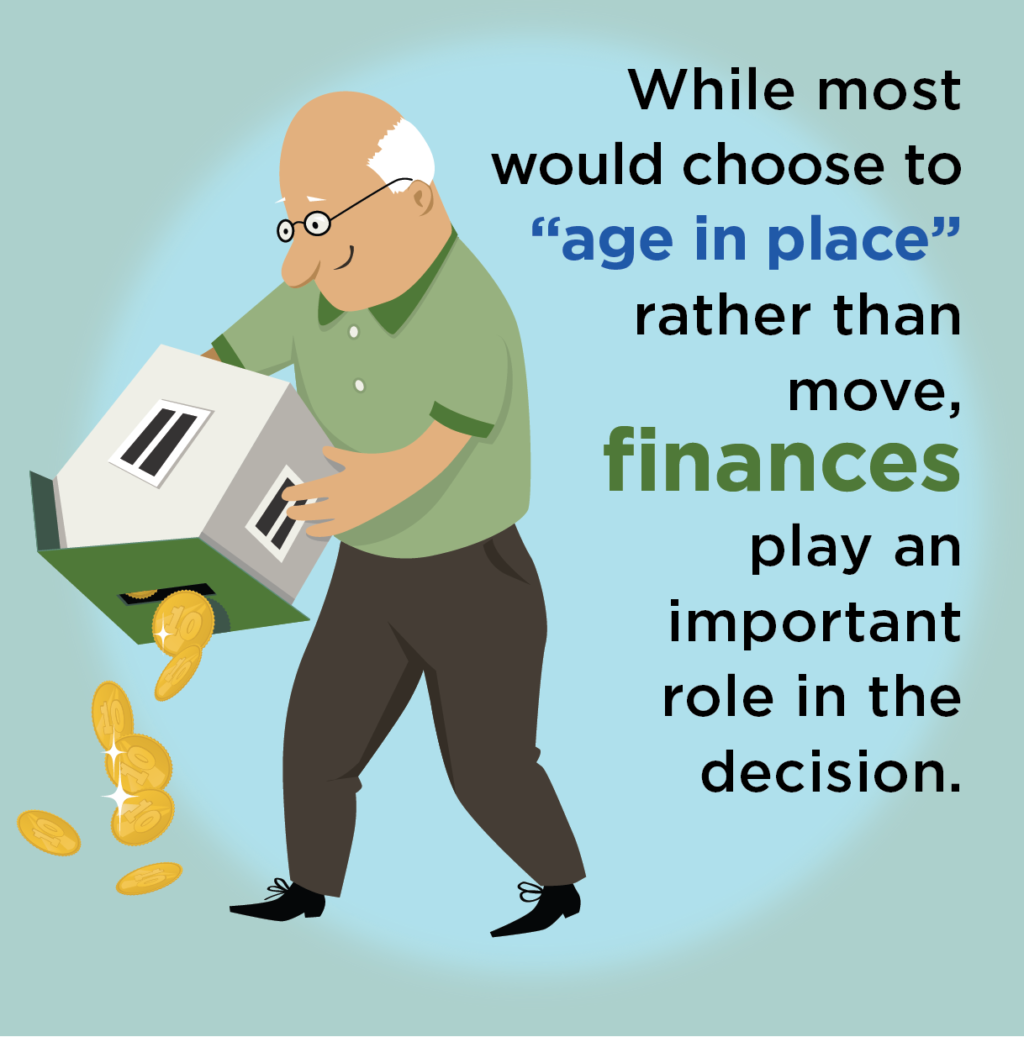

Safety
According to the NIH National Institute on Aging, safety issues for the elderly range from crime in their neighborhood to physical abuse to scams that can result in losing money. There are agencies that offer advice and resources to assist with safely aging in place. Additionally, for those living alone, an emergency alert system can help to enhance safety in the event of a fall or sudden debilitating illness. Modifications to the home also address a number of potential hazards. These include ramps at the entrance to the home, grab bars in the tub or shower, nonskid floors, more comfortable handles on doors or faucets, and better insulation. In some cases, there is financing available for safety modifications.
Home Maintenance
A group of Georgia Institute of Technology researchers conducted a comprehensive study of how aging affects one’s ability to perform home maintenance tasks. This study explored the issues that older adults have with maintaining their home and issues that they might foresee in performing those tasks in the future. The researchers also investigated the services, products, technologies and remodeling options older adults considered or used that could help them. The researchers developed a list of the most difficult home maintenance activities. These included cleaning, outdoor maintenance, home upkeep, repair, indoor update/remodel, movement within the home (specific to performing maintenance tasks), and other. The vast majority of the commentary related to these difficult categories. The study concluded that, “by understanding the nature of home maintenance problems older adults encounter while aging in place, as well as their solutions for managing difficult home maintenance tasks, interventions and redesign efforts can be more effective and address the areas of greatest need. To that end, home service providers, technology developers, home designers, and senior agencies can enable aging in place.”
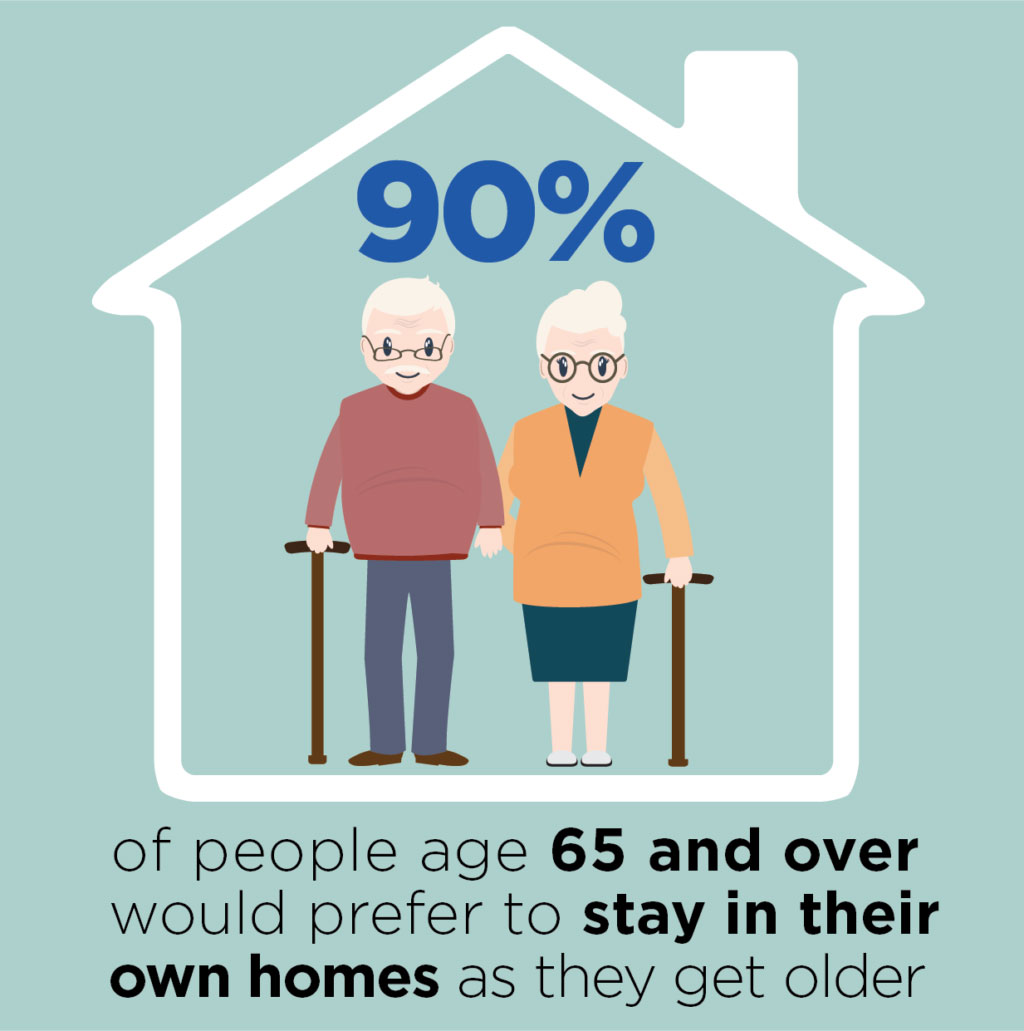
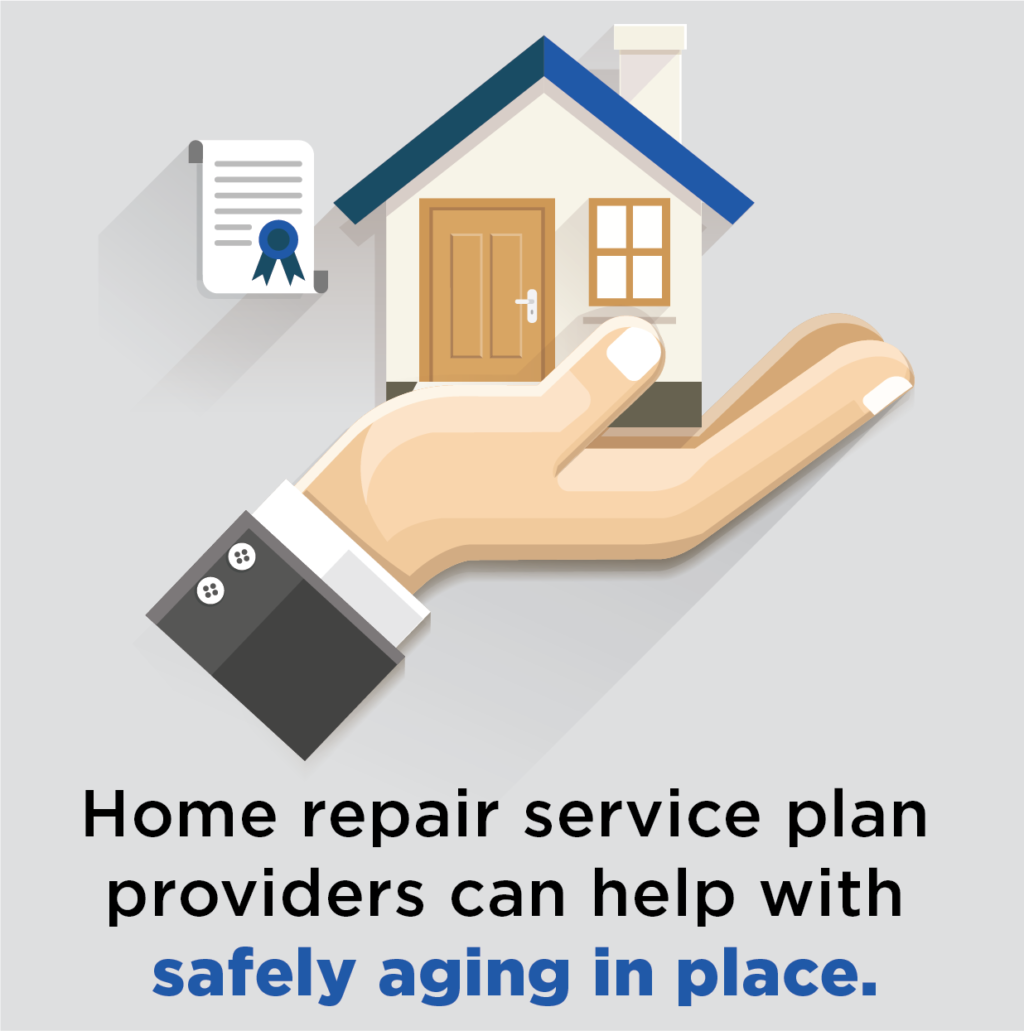
Repair Service Plans
Home repair service plan providers can address several important aspects of safely aging in place:
- Proactive attention to a problem – A person with a plan is more apt to call for service on a small problem before the issue becomes worse, and potentially dangerous. Once on site contractors can check other systems to ensure there are no additional issues and if any are discovered they can be fixed immediately.
- Expeditious response – While it may take days for a contractor from the phone book to arrive, a home protection plan company has a defined and short response time.
- Careful screening/vetting – Home protection plans provide consumers access to fully vetted, licensed and insured local contractors. This dramatically reduces the risk related to allowing a stranger into one’s home, particularly for elderly people living alone.
Want to Learn Even More?
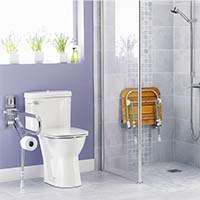
Can You Afford to Age in Place?
According to an AARP study, 90 percent of people age 65 and over would prefer to stay in their own homes as they get older — and not go to a nursing home or assisted living facility. Read More

Aging In Place – What Does Aging In Place Really Mean?
Aging in place means a person making a conscious decision to stay in the inhabitation of their choice for as long as they can with the comforts that are important to them. As they age these may include adding supplementary services to facilitate their living conditions and maintain their quality of life. Read More

Financial Considerations of ‘Aging In Place’
One of the most critical decisions retirees will make is whether to stay in their homes or move to a retirement community. While most would overwhelmingly choose to “age in place” rather than move, it’s not always the best financial choice, said Eleanor Blayney, the CFP Board’s consumer advocate. Read More
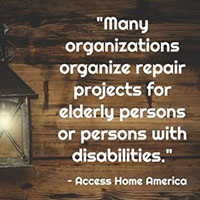
Home Modifications for Aging in Place: 50 Expert Tips and Quotes on Home Modifications That Support Aging in Place
More seniors are opting to age in place than ever before. This trend is driven in part by the rising costs of long-term care, coupled with the rapidly growing senior population as the Baby Boomer generation ages–a generation that’s enjoying a more active, vibrant lifestyle than previous generations. Technology and wider availability of services, such as home meal delivery services, are making it easier for older adults to remain in their own homes independently, as well. Read More

Aging in Place: Growing Old at Home
You may share the often-heard wish—”I want to stay in my own home!” The good news is that with the right help you might be able to do just that. Staying in your own home as you get older is called “aging in place.” This article contains suggestions to help you find the help you need to continue to live independently. Read More

Challenges to Aging in Place: Understanding Home Maintenance Difficulties
Age-related declines in capabilities may compromise older adults’ ability to maintain their homes thus threatening successful aging in place… An understanding of the specific challenges that older adults face in maintaining their homes can guide redesign efforts and interventions to effectively support older adults’ desire to age in place. Read More







